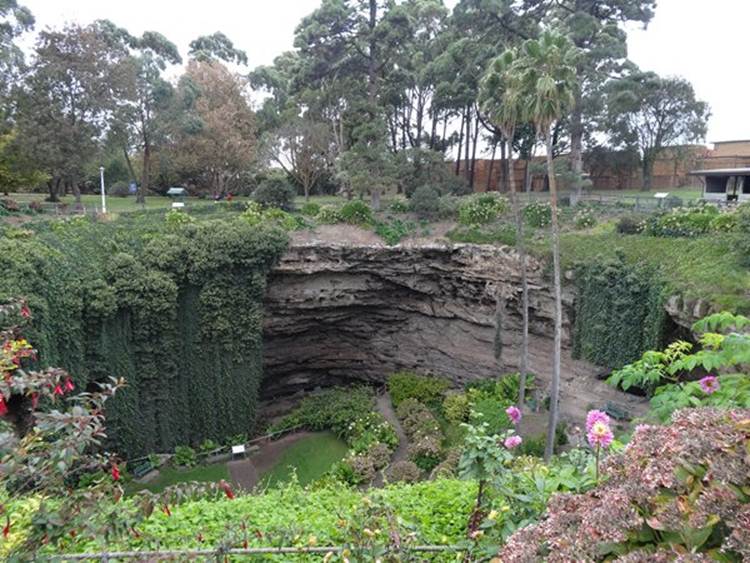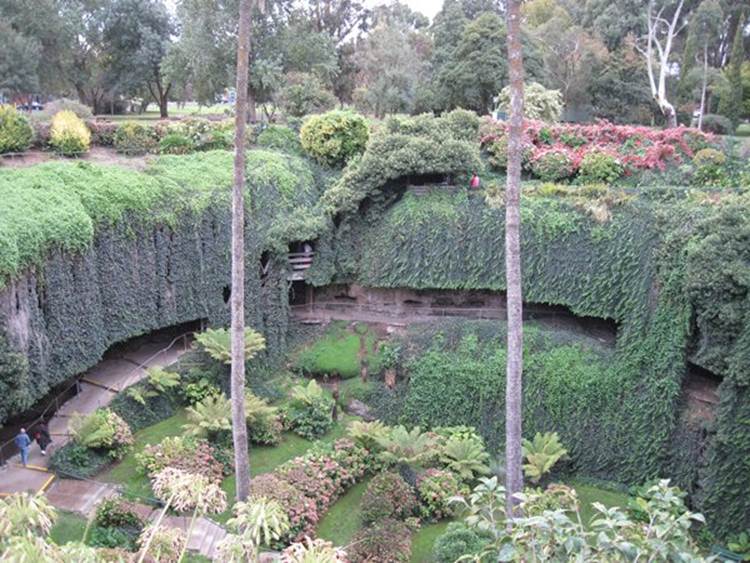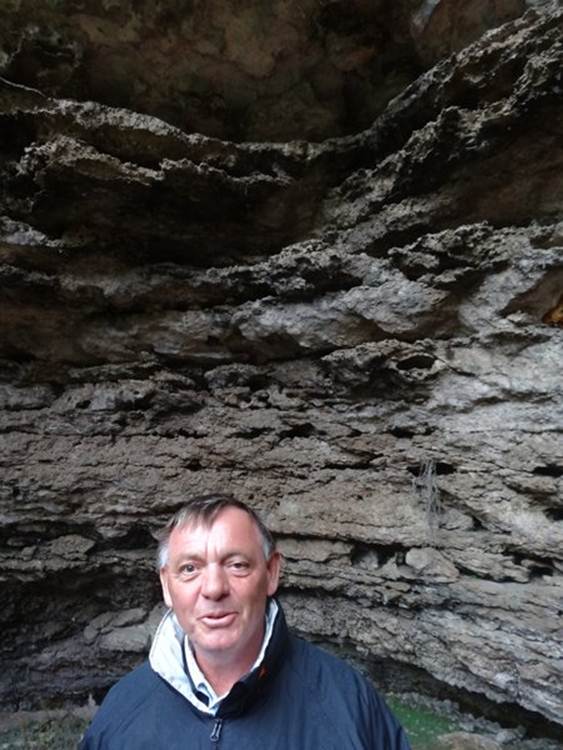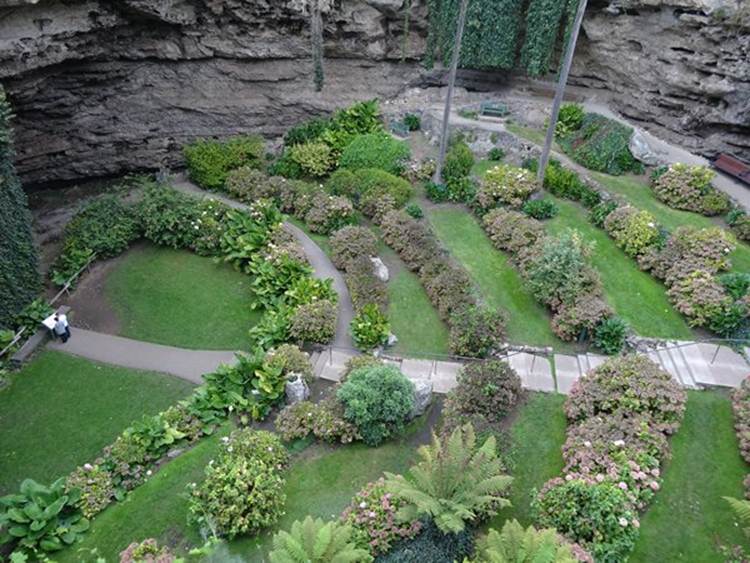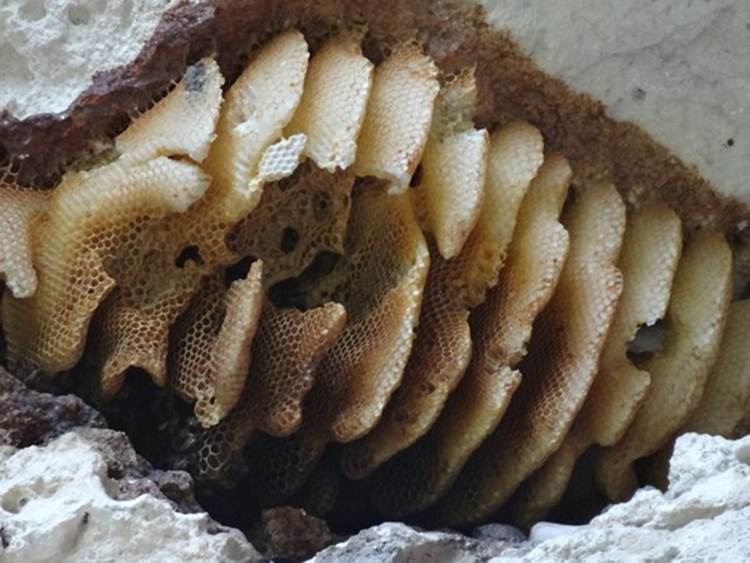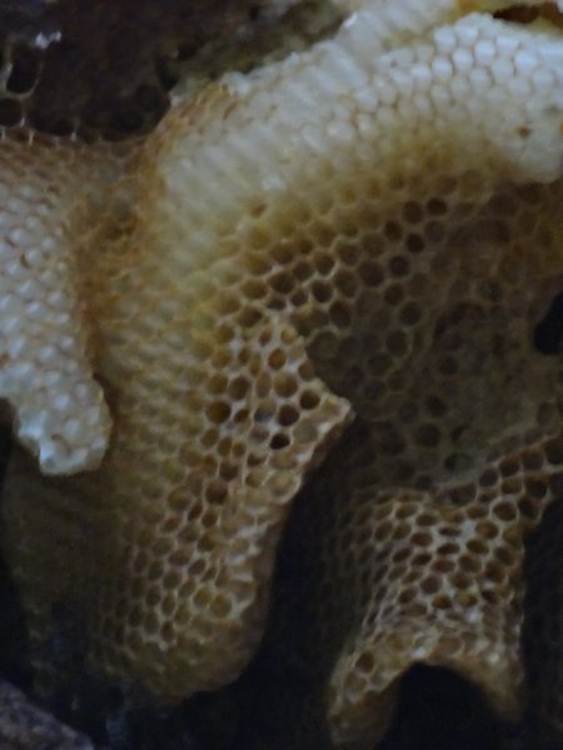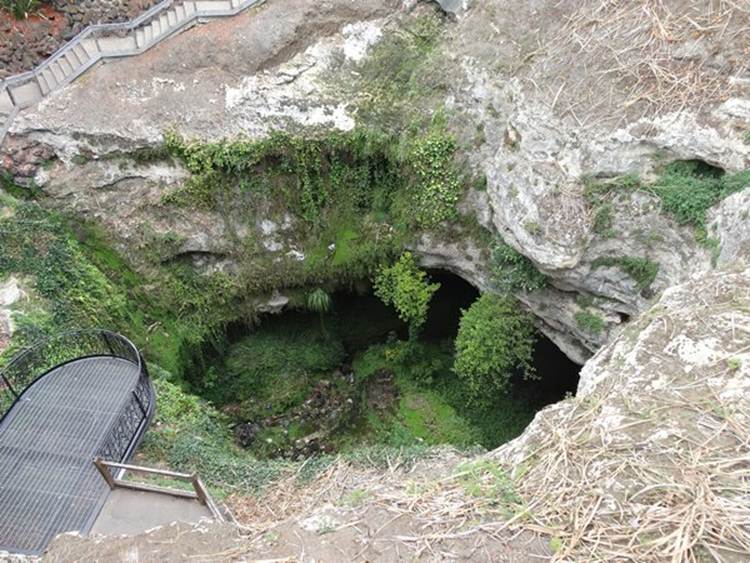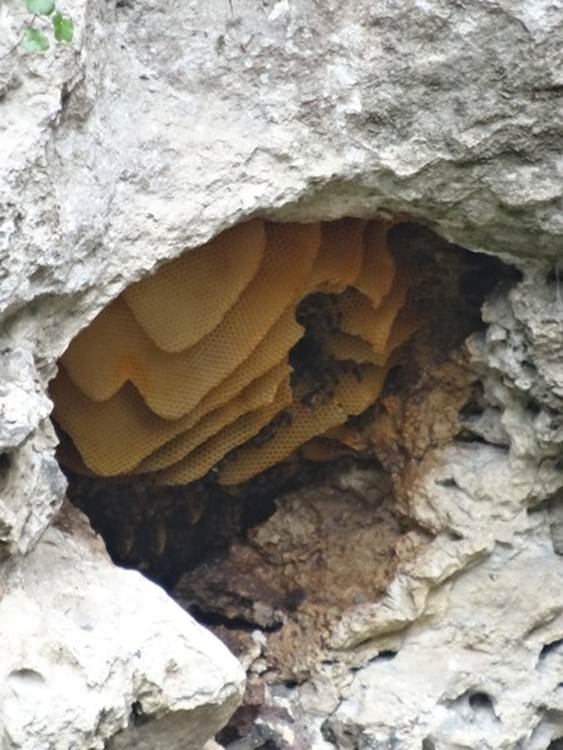Mount Gambier - sinkholes

Remember that shallow sea and all that limestone. About 15 million years ago uplift in the region caused the limestone to emerge from the sea. As mentioed above this limestone is very proprous and weakly acidic groundwater started to dissolve the rock along lines of weakness in the rock, such as vertical joints and horizntal bedding planes. Over millions of years large volumes of rock were eroded and big subterranean caverns resulted. Eventually the roof of the underground caverns collapsed forming a circular opening with vertical sides and infilled with collapsed material. Water originally covered the bottom of the sinkhole but watertables have dropped since the 1930s and the base is now revealed.and lots of subterranean limestone caves have formed. In places they have collapsed forming sink holes or dolines. There are two in the town of Mount Gambier. This is Umpherston sink hole and has a resident population of possums who come out at night.
You can walk right down to the bottom where a garden has been made. Beneath the hanging vine in the LHS of the photograph are picnic tables are BBQs.
Paul standing beneath the overhang, you can make out the horizontal layers of fossil rich sediment within the limestone. We spotted byozoans and shells but couldn’t get the camera to focus.
The garden in the base of the sinkhole.
Although we didn’t see any possums we did see bees. The sinkhole wall had several bees nests.
This is the other sink hole in Mount Gambier. Called the Cave Garden, more for its roses grown in the garden above than the sinkhole itself. It all looked a bit sad and dirty.
There used to be water at the bottom and this again provided water source for early settlers in the region. Again there were honeycombs hanging down inside holes of weathered limestone. You can just about make out the bees – look closely!
|
